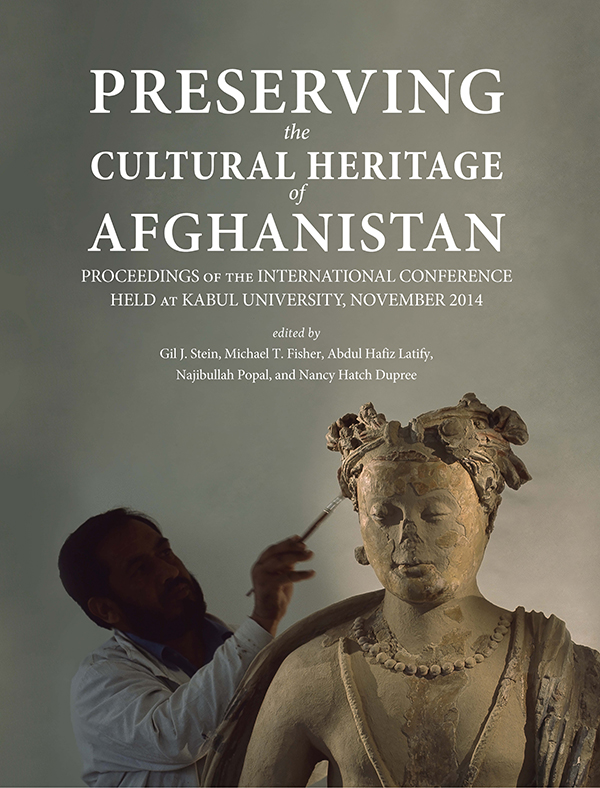the world of virtual reality (VR). China is harnessing the power of VR to preserve, enhance, and share its cultural heritage in groundbreaking ways. This article takes you on a journey through China’s immersive VR experiences, where ancient history and cutting-edge technology converge to provide a new perspective on cultural treasures.
In the realm of cultural preservation and technological innovation, China’s embrace of virtual reality (VR) has resulted in a marriage of the past and the future. Through an array of pioneering VR initiatives, China is not merely preserving its cultural heritage; it is redefining the way we perceive, interact with, and understand the legacy of a nation steeped in history. This article invites you to embark on a fascinating exploration of China’s immersive VR experiences, where ancient traditions and state-of-the-art technology intersect to unveil a fresh and captivating perspective on the country’s cultural treasures.
Reviving the Past with Remarkable Realism
China’s dedication to VR technology is evident in its ambitious endeavors to bring the past to life with unparalleled realism:
Digital Archeology: China’s archeological teams employ cutting-edge 3D scanning and modeling techniques to meticulously recreate ancient artifacts and archaeological sites in the virtual realm. These digital replicas offer not only astonishing accuracy but also the ability to explore historical wonders that may be too fragile or remote for in-person visits.
Immersive Restoration: With VR, China’s cultural heritage experts have unlocked the power of virtual restoration. Dilapidated structures and time-worn artworks are transformed into their former glory within the virtual realm. It’s as if the hands of time are reversed, allowing viewers to experience the magnificence of structures like the Great Wall or the grandeur of the Forbidden City as they once stood.
Educational Time Travel: Traditional education is evolving as VR experiences become integral to learning. Students no longer rely solely on textbooks; they embark on educational journeys through history and culture. Through interactive VR lessons, they step back in time to witness pivotal historical events, interact with influential figures, and explore ancient dynasties—all while seated in a classroom.
Expanding Educational Horizons
China’s application of VR in education extends far beyond the confines of the classroom:
Interactive Learning: VR transforms education into an interactive adventure. Students not only learn about history, but they also actively engage with it. They can virtually converse with historical figures, visit iconic landmarks, and gain firsthand insights into the culture and customs of bygone eras.
Cultural Tourism: Through VR, students are no longer limited by geography. They embark on virtual field trips that transport them to renowned cultural sites across China. The Silk Road, the Mogao Caves, or the Terracotta Army come to life in rich and immersive detail.
Language and Cultural Immersion: VR language apps provide an immersive environment for language learners. Learners can practice Chinese while navigating through authentic cultural scenarios, promoting language acquisition and cultural understanding in a dynamic and engaging way.
Preserving the Intangible
In China, cultural heritage extends beyond physical artifacts. VR also plays a pivotal role in preserving intangible heritage:
Traditional Performances: China’s cultural richness encompasses traditional performances, such as Peking opera and classical dance. VR captures these art forms with breathtaking fidelity, enabling viewers to experience the beauty and intricacy of these performances from within the virtual stage.
Oral Histories and Wisdom: VR serves as a digital repository for oral histories, ensuring that the wisdom and stories of older generations are not lost to time. Through immersive narratives, viewers connect with the living history of their ancestors and gain a deeper appreciation for their cultural roots.
Cultural Revival: As VR experiences rekindle interest in traditional customs and practices, a cultural revival is underway. Younger generations, equipped with modern technology, are embracing and celebrating their cultural heritage in exciting and innovative ways.
The Future of Cultural Heritage Through VR
The future promises even more exciting possibilities:
Global Accessibility: China’s VR experiences of cultural heritage will transcend borders, fostering cross-cultural understanding and appreciation. The world will have unprecedented access to China’s rich history and traditions.
Collaborative Initiatives: International collaborations will enable the sharing of VR experiences and the exchange of cultural insights. Nations will unite to preserve and celebrate their shared human heritage.
Personalized Cultural Journeys: VR will offer personalized cultural journeys, allowing users to tailor their experiences to explore specific aspects of China’s diverse heritage. From ancient philosophy to culinary traditions, the virtual realm will become a playground for exploration and discovery.
In a world where the past melds seamlessly with the future, China’s innovative embrace of virtual reality is reshaping how humanity engages with its cultural heritage. Through VR, China’s ancient treasures are transformed into living experiences, enriching education, preserving traditions, and fostering a deeper and more profound appreciation for the cultural riches that have endured through the ages. As we journey into this digital age, the balance between tradition and technology in preserving cultural heritage will continue to evolve, with VR leading the way.
Don’t stop here; you can continue your exploration by following this link for more details: Dragons Catalog: Summer & Gap Year Programs by Where There …

China’s cultural heritage spans millennia, encompassing a treasure trove of ancient artifacts, monuments, and traditions. To safeguard these legacies for future generations, China has turned to VR as a preservation tool.
Virtual reality (VR) technology has emerged as a powerful ally in China’s mission to preserve its rich cultural heritage. By digitally recreating historical sites, artifacts, and traditions, VR not only safeguards these legacies but also makes them accessible to a global audience. This innovative approach not only preserves the past but also enhances cultural appreciation and education, bridging the gap between tradition and modernity. China’s commitment to using VR for cultural preservation underscores its dedication to celebrating its roots while embracing the possibilities of the digital age.
You can also read more about this here: Augmented Reality in Cultural Heritage: An Overview of the Last …

China’s approach to education is evolving with the integration of VR. Students are no longer confined to textbooks and traditional classrooms. Instead, they can embark on immersive journeys through history and culture.
This transformation in education is not only engaging but also highly informative. Through VR, students can explore ancient civilizations, witness historical events, and gain a deep understanding of their cultural heritage. This interactive learning experience not only makes education more enjoyable but also fosters a stronger connection to China’s rich history and traditions. Furthermore, VR provides a platform for educators to develop innovative teaching methods that cater to diverse learning styles, ultimately enhancing the quality of education in China. As technology continues to advance, the integration of VR in education holds the promise of a brighter and more interactive future for students.
Should you desire more in-depth information, it’s available for your perusal on this page: Metaverse beyond the hype: Multidisciplinary perspectives on …

China’s cultural heritage isn’t limited to physical artifacts. Intangible heritage, such as traditional music, dance, and rituals, is equally valuable. VR is a powerful medium for preserving these intangible aspects of culture.
China’s cultural heritage is a rich tapestry that encompasses not only physical artifacts and historical sites but also intangible treasures that have been passed down through generations. Traditional music, dance, rituals, and oral traditions are among the intangible elements that make up this cultural mosaic. Preserving and passing on these aspects of culture is essential to maintaining a connection with the past and ensuring their continuity into the future. In this endeavor, Virtual Reality (VR) emerges as a powerful and innovative tool.
1. Immersive Preservation:
VR offers an immersive and interactive way to preserve and transmit intangible cultural heritage. Through meticulously crafted virtual experiences, individuals can step into the world of traditional music, dance, and rituals. They can witness performances, ceremonies, and artistic expressions in a manner that transcends the limitations of time and space.
2. Cultural Education:
VR not only preserves cultural heritage but also serves as an educational platform. It provides an engaging and accessible means for people, both within China and around the world, to learn about and appreciate the intricacies of Chinese traditions. VR can be utilized in schools, museums, and cultural institutions to enhance cultural education.
3. Global Accessibility:
One of the remarkable aspects of VR is its global reach. Anyone with access to VR technology can delve into the depths of Chinese culture, regardless of their physical location. This accessibility allows for cross-cultural exchanges and promotes understanding and appreciation of China’s diverse heritage.
4. Documenting Endangered Practices:
Many traditional practices and rituals are at risk of disappearing as modernization advances. VR can play a pivotal role in documenting and archiving these endangered elements of culture. By creating virtual records of these practices, future generations can study, appreciate, and potentially revive them.
5. Cultural Tourism:
VR opens up exciting possibilities for cultural tourism. Virtual tours of historical sites, immersive journeys through traditional festivals, and encounters with indigenous music and dance can attract tourists and promote cultural exchange while preserving the authenticity of these experiences.
6. Community Engagement:
VR can be used as a tool for community engagement and cultural revitalization. Communities can actively participate in creating VR content that represents their traditions, ensuring that their unique cultural expressions are faithfully preserved and shared.
In conclusion, China’s cultural heritage is a treasure trove of intangible traditions that deserve to be celebrated, preserved, and passed down through the ages. VR offers an innovative means of achieving this, allowing for the immersive preservation and global dissemination of traditional music, dance, rituals, and more. As technology continues to evolve, it will undoubtedly play a vital role in safeguarding China’s rich cultural heritage for generations to come, bridging the past with the present and the future.
To expand your knowledge on this subject, make sure to read on at this location: Augmented Reality in Cultural Heritage: An Overview of the Last …

As China continues to push the boundaries of what’s possible with VR and cultural heritage, the possibilities are limitless. Future developments may include:
Virtual Cultural Tourism: Imagine exploring ancient Chinese landmarks and historical sites in immersive virtual reality from the comfort of your home.
Educational VR Experiences: Students worldwide could attend virtual classes where they interact with historical artifacts and cultural icons in real-time.
Interactive Museums: VR could revolutionize museum visits, allowing users to engage with exhibits, access detailed information, and even interact with historical figures.
Preservation of Endangered Sites: VR can contribute to preserving endangered cultural sites by creating digital replicas that can be studied and enjoyed virtually.
Cultural Exchange: People from diverse backgrounds can engage in cross-cultural experiences, fostering greater understanding and appreciation of Chinese heritage.
Artistic Collaborations: VR enables artists to create interdisciplinary projects that merge traditional Chinese arts with cutting-edge technology, producing unique and innovative works.
Health and Wellbeing: VR applications may emerge for relaxation and stress relief, offering serene virtual environments inspired by Chinese landscapes and philosophies.
Explore this link for a more extensive examination of the topic: Augmented Reality in Cultural Heritage: An Overview of the Last …

In a world where the past meets the future, China’s innovative use of virtual reality is redefining the relationship between people and their cultural heritage. Through VR, the treasures of China’s past become living experiences in the present, enriching education, preserving tradition, and fostering a deeper appreciation for the cultural riches that have endured through the ages.
China’s embrace of virtual reality (VR) represents a harmonious fusion of tradition and modernity. By leveraging VR technology, the nation is not only preserving its cultural heritage but also making it more accessible and engaging for people of all ages. This innovative approach to education and heritage conservation not only bridges the gap between the past and the future but also nurtures a profound sense of cultural identity among its citizens and the global community. As China continues to pioneer the use of VR in cultural preservation, it opens new doors to immersive learning experiences that inspire generations to come.
Don’t stop here; you can continue your exploration by following this link for more details: Culture & Heritage – Draw & Code

More links
If you’d like to dive deeper into this subject, there’s more to discover on this page: Feature: China’s cultural heritage goes virtual in Australia – Xinhua …
